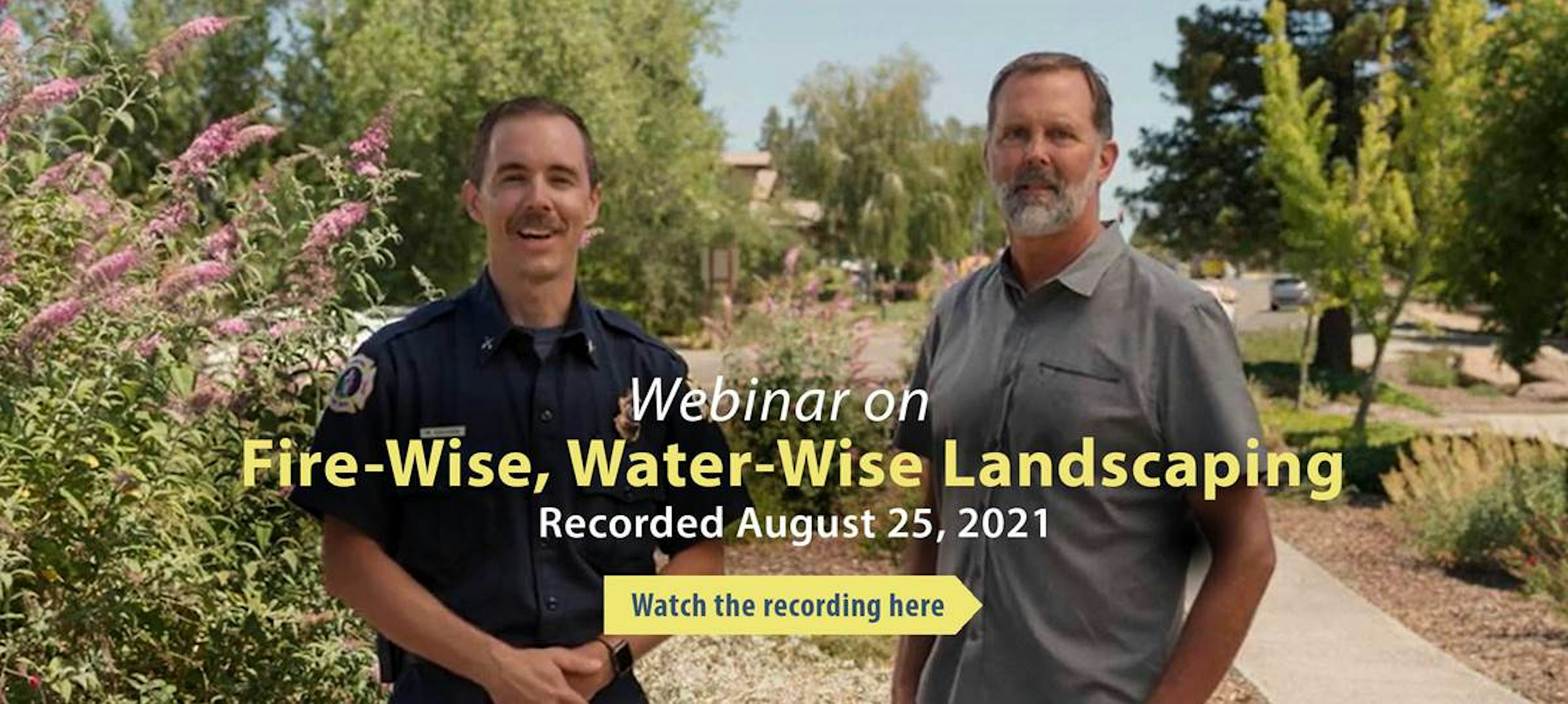Smart Water Use
Fire-Wise, Water-Wise Landscaping

Much of PCWA's service area is located in the wildland-urban interface, where beautiful forests meet new and existing neighborhoods. As the threat of wildfire becomes ever-more present with a changing climate, a new type of landscaping—one that is not only water-wise but also fire-wise—is emerging as a new tool for reducing the vulnerability of homes and property to wildfire.
What is Fire-Wise, Water-Wise Landscaping?
Fire-Wise, Water-Wise Landscaping (also called “Firescaping”) is the practice of designing and maintaining your yard in a way that reduces its vulnerability to wildfire. The goal is to create a landscape that is both beautiful and provides defensible space to protect your home and property from fire.
These landscapes can include many of the same traditional landscape elements that are important to living and enjoying your home, including places to entertain and play, and plants with varying colors, textures, flowers and foliage. The difference lies in the types of plants and their placement.
Defensible space is an area between your home and other structures where potential fuel (materials or vegetation) are modified, reduced or cleared to create a barrier and slow the spread of wildfire toward a home.
Plant Selection
A fire-resistant landscape features plants less likely to catch fire placed in ways to resist the spread of fire to a home. There are no “fire-proof” plants—plants cannot be damaged or killed by fire. However, there are plants with foliage and stems that are less likely to significantly contribute to a fire’s fuel and intensity as long as they are properly maintained, pruned and watered. These plants are also great in California, because they are often native and/or drought tolerant.
On the other hand, Fire-Wise, Water-Wise landscaping avoids the planting of evergreen shrubs and trees, as well as ornamental grasses and berries, within 30 feet of a home because they are typically more flammable.
Once planted, properly maintaining trees, shrubs and plants is just as important as their selection.
Landscape Design and Plant Placement
Design principles incorporate all of a landscape’s features to create defensible space and fuel breaks, including driveways, lawns, walkways, patios, parking areas, boulders and rocks, pools, ponds, streams and other areas. The overall approach is “less is more” - with plenty of space between plants, groups of plants and other elements.
Design is often built around concentric fire-safety zones or circles with plants that become taller and less water intensive the further away from the home. Combined, the zones create 100 feet of defensible space around a home required by California law to prevent the spread of wildfire.
Zone 1 is the 30 feet closest to a home or structure, which is the most critical area for defensible space. Here, plants should be efficiently irrigated throughout the fire season. Plants for this area may include perennials, low-growing or non-woody deciduous plants, or a small amount of lawn (or turf alternative) irrigated with high-efficiency rotator sprinklers and a weather-based sprinkler timer (rebates available!). Other good choices for this area include patios, masonry or rock planters, dry streambeds and boulders.
Other Considerations
- A home on a brushy site above a south- or west-facing slope will require more extensive defensible space landscape planning than a home located on a flat lot with little vegetation.
- Prevailing winds, seasonal weather, local fire history and the characteristics of native vegetation are also important to consider when creating your Fire-Wise, Water-Wise landscape.
Demonstration Gardens
Additional Resources
Firewise Trailer Program
Free from the Placer Resource Conservation District
To assist communities in becoming fire safe, the Placer RCD Firewise Trailer is now available for community and neighborhood clean-up days. The trailer is full of tools such as pruners, rakes, weed eaters, loppers weed wrenches and hand tools. Educational materials regarding defensible space and wildfire prevention are also available for events. For information, please contact George Alves at George@placerrcd.org
